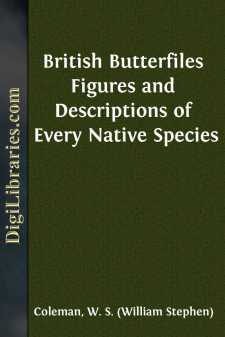Categories
- Antiques & Collectibles 13
- Architecture 36
- Art 48
- Bibles 22
- Biography & Autobiography 813
- Body, Mind & Spirit 142
- Business & Economics 28
- Children's Books 17
- Children's Fiction 14
- Computers 4
- Cooking 94
- Crafts & Hobbies 4
- Drama 346
- Education 46
- Family & Relationships 57
- Fiction 11829
- Games 19
- Gardening 17
- Health & Fitness 34
- History 1377
- House & Home 1
- Humor 147
- Juvenile Fiction 1873
- Juvenile Nonfiction 202
- Language Arts & Disciplines 88
- Law 16
- Literary Collections 686
- Literary Criticism 179
- Mathematics 13
- Medical 41
- Music 40
- Nature 179
- Non-Classifiable 1768
- Performing Arts 7
- Periodicals 1453
- Philosophy 64
- Photography 2
- Poetry 896
- Political Science 203
- Psychology 42
- Reference 154
- Religion 513
- Science 126
- Self-Help 84
- Social Science 81
- Sports & Recreation 34
- Study Aids 3
- Technology & Engineering 59
- Transportation 23
- Travel 463
- True Crime 29
British Butterfiles Figures and Descriptions of Every Native Species
Description:
Excerpt
CHAPTER I.
INTRODUCTION.
WHAT IS A BUTTERFLY—BUTTERFLIES AND MOTHS—BUTTERFLY LIFE—THE EGG STAGE—SCULPTURED CRADLES—BUTTERFLY BOTANY—THE CATERPILLAR STAGE—FEEDING UP—COAT CHANGING—FORMS OF CATERPILLARS—THE CHRYSALIS—MEANING OF PUPA, CHRYSALIS, AND AURELIA—FORMS OF CHRYSALIDES—DIFFICULTIES OF TRANSFORMATION—INFLUENCE OF TEMPERATURE.
Occasionally a missive arrives from some benevolent friend, announcing the capture of a "splendid butterfly," which, imprisoned under a tumbler, awaits one's acceptance as an addition to the cabinet. However, on going to claim the proffered prize, the expected "butterfly" turns out to be some bright-coloured moth (a Tiger moth being the favourite victim of the misnomer), and one's entomological propriety suffers a shock; not so much feeling the loss of the specimen, as concern for the benighted state of an otherwise intelligent friend's mind with regard to insect nomenclature.
It is clearly therefore not so superfluous as it might at first otherwise seem, to commence the subject by defining even such a familiar object as a butterfly, and more especially distinguishing it with certainty from a moth, the only other creature with which it can well be confounded.
The usual notion of a butterfly is of a gay fluttering thing, whose broad painted wings are covered with a mealy stuff that comes off with handling. This is all very well for a general idea, but the characters that form it are common to some other insects besides butterflies. Moths and hawk-moths have mealy wings, and are often gaily coloured too; whilst, on the other hand, some butterflies are as dusky and plain as possible. Thus the crimson-winged Tiger, and Cinnabar moths get the name of butterflies, and the Meadow brown butterfly is as sure to be called a moth. So, as neither colouring nor mealy wings furnish us with the required definition, we must find some concise combination of characters that will answer the purpose. Butterflies, then, are insects with mealy wings, and whose horns (called "antennæ") have a clubbed or thickened tip, giving them more or less resemblance to a drum-stick. So the difference in the shape of the antennæ is the chief outward mark of distinction between butterflies and moths, the latter having antennæ of various shapes, threadlike or featherlike, but never clubbed at the tip.
Having thus settled how a butterfly is to be recognized at sight, let us see what butterfly life is: how the creature lives, and has lived, in the stages preceding its present airy form.
In like manner with other insects, all butterflies commence their existence enclosed in minute eggs; and these eggs, as if shadowing forth the beauty yet undeveloped whose germ they contain, are themselves such curiously beautiful objects, that they must not be passed over without admiring notice. It seems, indeed, as if nature determined that the ornamental character of the butterfly should commence with its earliest stage; form, and not colour, being employed in its decoration, sculpture being here made the forerunner of painting....


